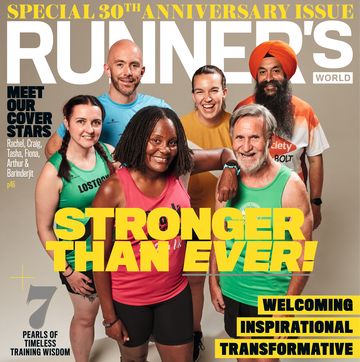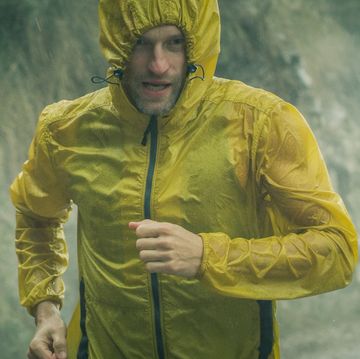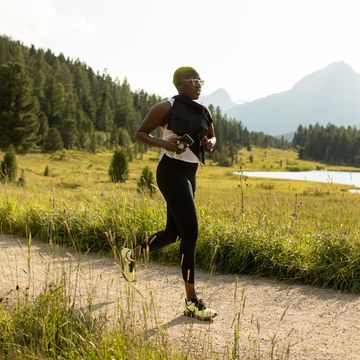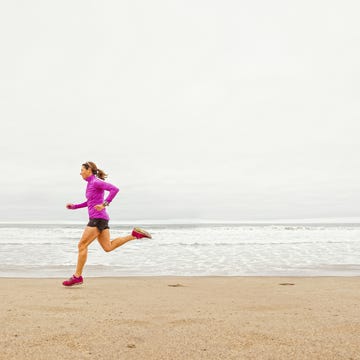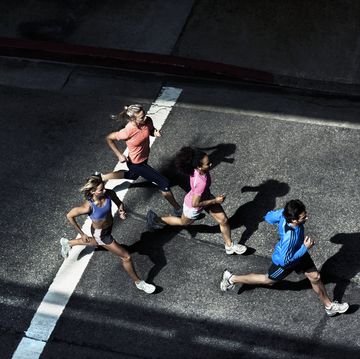
The best trails to run in the UK
From Scotland to Cornwall, these are the best trails to explore in the UK
With over 17 million posts on Instagram, and more than 600 million views for videos tagged #trailrunning over on TikTok, it's fair to say that trail running is having a bit of a moment.
According to data on ‘The State of Trail Running’ from the website RunRepeat, trail running has grown by 231% in the last 10 years. In collaboration with World Athletics, the research also showed that trail runners have never been older, with an average age of 39.5 years old, and that female participation has grown from 13% in 1997 to 46% in 2022.
Trail running shoes have become more advanced too, with running brands including Nike – who've launched their long-awaited Zoom X Ultrafly Trail – Adidas-Terrex, New Balance, Salomon, Saucony, and Hoka all testing trail running super shoes on the feet of their athletes. Even brands like Lululemon, known predominately for their super soft yoga leggings, have recently revealed their first trail shoe.
Trail running is officially in.
What is trail running?
Trail running is an umbrella term encompassing any running that's not on a road, track or treadmill. ‘Trail running usually refers to running outside on dirt and natural trails (as opposed to paved roads or indoor treadmills),’ says trail runner and AllTrails member James Poole. ‘While it is not always the case, trail running usually involves a change in elevation with uphill climbing and technical descents. The constantly changing and uneven terrain calls for modified running techniques, better lower-leg and core strength and even heightened focus to navigate safely and efficiently.’
Running on the road (and even more so on a treadmill) can often be about covering a specific distance in a certain time – whether it’s 5km or a marathon the aim is to get from A to B as quickly as possible, he says. ‘Trail running could be thought of as more akin to mountain biking or downhill skiing – activities where the focus tends to be less on getting to the finish first, and more on having the most fun.’
Is trail running harder than the road?
Trail running is generally considered more challenging than road running due to the rugged terrain and technical paths, elevation changes and extended distances.
‘While both road and trail running can be a real challenge, a 5k trail run is probably going to be harder than a 5k road run for the average runner,’ says Poole. ‘On balance, trail runs tend to be hillier and have more varied terrain underfoot. As such, most runners would expect to be slower on the trails compared to running on the road. There are a number of factors that might make trail running harder than road running. Running uphill asks more of your cardiovascular and musculoskeletal systems – meaning that you need to be fitter and stronger to run the same pace uphill as you do on the flat. In addition, while running downhill can be easier on the cardiovascular system, the impact forces of striking the ground actually increase, providing greater strain on the upper leg muscles – particularly the quadriceps.
‘The good news is that there is also plenty of upside to running on the trails. Pounding the concrete and tarmac can place significant stress on the leg muscles. Grass, mud, sand and gravel can all offer a softer running surface, lessening impact forces and helping to prevent injury. If that wasn’t enough, varied surroundings, challenging singletrack and even huge climbs can make a trail run more rewarding than continually looking at a GPS watch or stressing about missed splits.’
Where are some easy beginner trails?
The brilliant thing about living in the UK is there are trails literally everywhere, says Poole. ‘Sure, they might not be the Appalachian Trail, but there are often sections of trails in parks, alongside rivers and canals and even in big cities such as London and Manchester. The easiest way to find them is to put on some running shoes – road shoes are fine to start with – and head out the door. I guarantee you, you’ll be surprised by what you can find.’
Various country parks across the UK also have trails designed for trail running, he adds. ‘These parks often have marked routes and manageable gradients, making them suitable for most fitness levels. Living in the city shouldn’t mean that you can’t find dirt to run on; green spaces such as Hampstead Heath, Richmond Park and Epping Forest offer great trails for those living in the Capital. For those looking for a bigger adventure, many national parks such as The Peak District, Lake District and Snowdonia National Park, have designated trails with gentle gradients and compact surfaces. These trails often offer a mix of wooded sections and open areas, providing a pleasant and scenic trail running experience.’
How do I start trail running?
‘The best way to start trail running is simply to put on your running shoes and find some trails,’ says Poole. You don’t need a lot of different gear to try trail running – your normal running shorts, T-shirt and sports bra will do. You also don’t need trail-specific shoes. Our advice is to run in your regular road shoes and if you find you’re slipping about, and you feel like you need something trail-specific, then invest in something a little more rugged with adequate grip and support to navigate uneven terrain.
For first-timers, begin by choosing short and easy (read: flat) trails that match your current fitness level. Look for well-marked and well-travelled trails (AllTrails and Strava are particularly helpful for this) and then gradually increase the distance and difficulty as you gain more experience and confidence. ‘Start close to home, in local parks and easy paths and as you progress look for bigger adventures,’ adds Poole. ‘The most important thing is to start. Once you have a bit of experience and want to go further afield, it’s essential to remember that the terrain and weather conditions can vary, so always check local information, trail maps, and weather forecasts before heading out.’
If you’re a complete beginner, Poole recommends starting with shorter sessions of 10-15 minutes, 4-5 times per week, and stopping running when it is no longer enjoyable. ‘The important thing is to build a habit and doing something you hate will not do so. Remember: even professional trail runners walk steep hills so don’t worry at the beginning if you’re spending more time walking than running. Trail running is truly about the journey, not the speed of reaching your destination.’
Ready to step into the world of trail running? Here are the best trails to run in the UK, according to data from AllTrails.
Watch Next

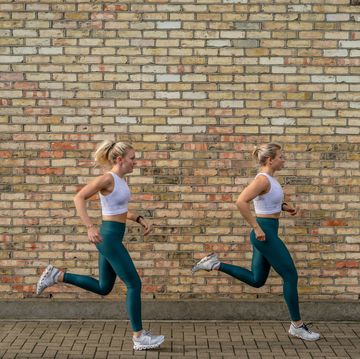
Runners to follow on Instagram

How to start running again after a break

Hot bath or ice bath – which is best for recovery?

How to tackle fitness data overload















